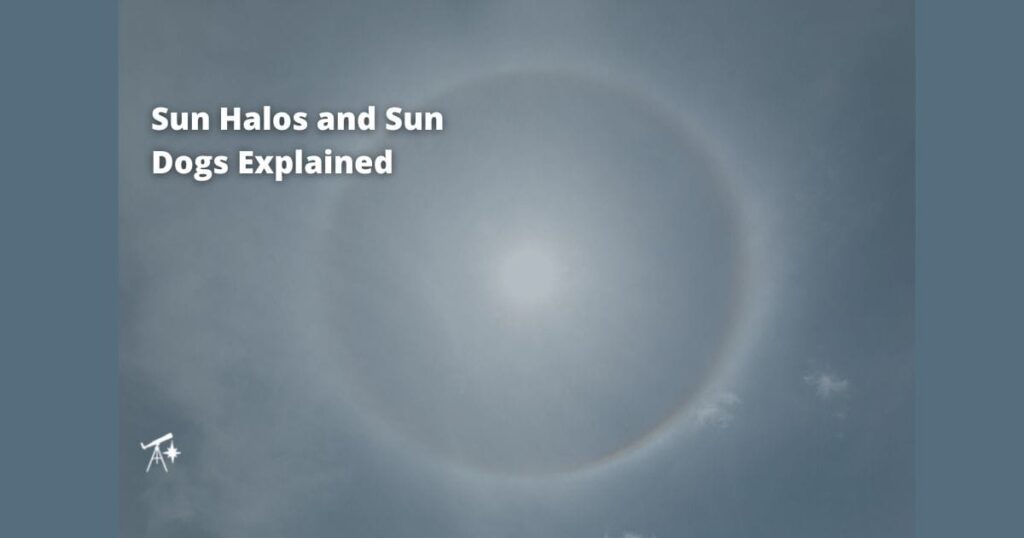Intrigued by bright spots or a halo around the Sun? You might be interested in the following. It’s what I found when I went searching for information about these relatively rare phenomena.

The first time I saw a halo around the Sun was last spring while swimming at a beach. Being close to midday, the phenomenon was near to overhead and large. It was kind of freaky, or at least awe-inspiring. Like, something special was about to happen.
Social media was abuzz with locals curious. A few expressed how it might mean something unworldly or prophetic.
So what was it really and what did it mean?
What is that halo around the Sun?
A halo around the Sun is an optical illusion! You’ll see these halos with the Moon more often. To understand what causes this phenomenon, see my article on Moon Halos and Weather Prediction.
There’s no actual ring around the Sun. Sunshine beaming through ice crystals suspended high up in our atmosphere produces the illusion. As I explained with the Moon halos, cirrus clouds create this effect.
It’s normal to see these in spring, according to a meteorologist in a comment I read, because the upper air is still chilled from winter.
But it might depend on your location. This photo of a Sun halo was taken in India during May leading up to their monsoon season, which brings rain.
What are Sun dogs?
Sun dogs are bright colored spots observed around the Sun. The phenomenon is due to the same reason you see Sun halos…refraction from light traveling through tiny ice crystals high up in the atmosphere often associated with wispy feathery cirrus clouds.
They sit 22 degrees either side of the Sun. This is angular distance. My article on hand measurements and degrees in the sky explains the use of angles (e.g. 22 degrees) in the sky. Important: Never look directly at the Sun — avoid using your hand to measure in this case.
They can be white but can also be rainbow-like.
The colors [of the Sundogs] usually go from red closest to the sun, out to blue on the outside of the sundog.
National Weather Service, NOAA
Sun dogs are also known as parhelion, derived from the Greek word parēlion (para- + hēlios) — the prefix para in Greek meaning alongside and helios refering to sun.
The name ‘Sun dog’ comes from the early Greeks. Zeus is the God of the sky in Greek mythology and the ‘mini suns’ around the Sun was portrayed as Zeus walking his dogs.
It was believed the god Zeus walked his dogs across the sky and that the bright “false suns” in the sky on either side of the sun’s disk were the dogs.
Tom Skilling, Meteorologist, 2017 Chicago Tribune
What Sun Halos and Sun Dogs mean
Like Moon halos, Sun halos and Sun dogs are said to indicate rain on the way…
Long-held beliefs of indigenous cultures involve tales of rain associated with such phenomena. First peoples of Australia are an example.1
Incidentally, a thunderstorm followed the Sun halo I’d seen that day in spring. If you see one of these phenomena, take a note of the weather that follows. Did it make true this idea of ‘rain on the way’?
Info sources
- Astronomy: Sky Country (2022) by Noon andDe Napoli shares the first knowledge of the night skies of Australia.
